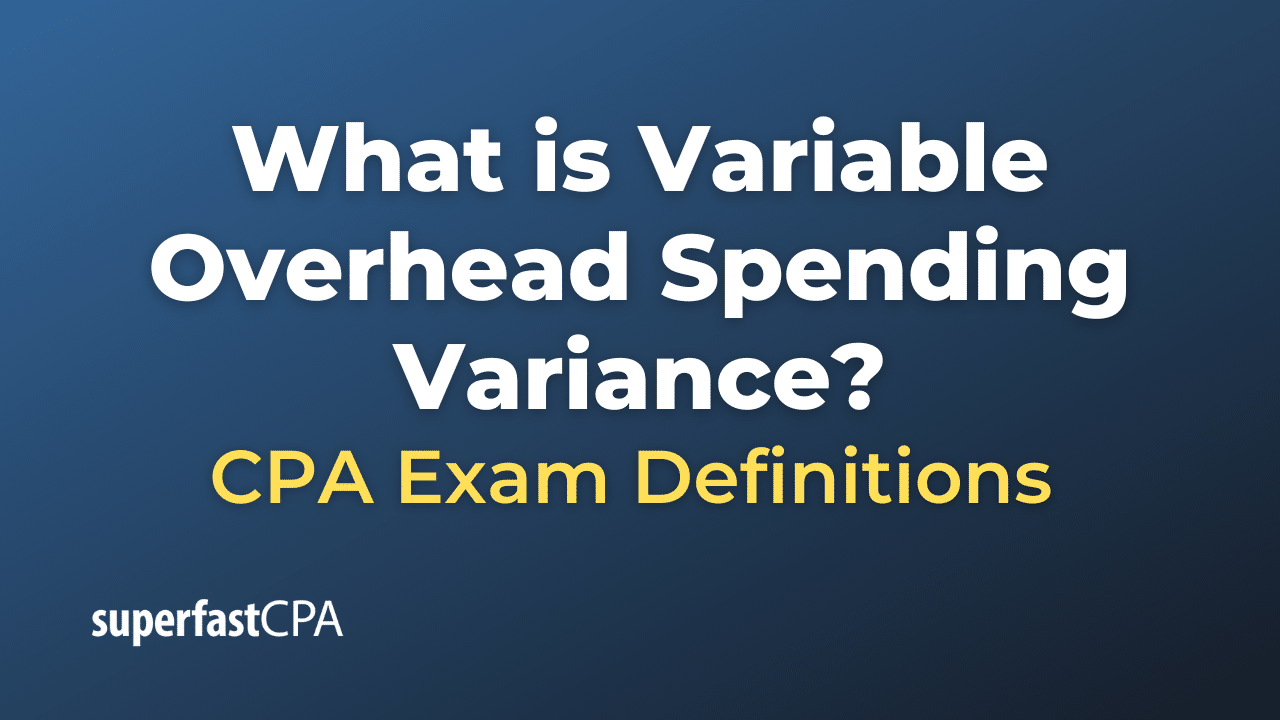
Sometimes these flexible budget figures and overhead rates differ from the actual results, which produces a variance. This example provides an opportunity to practice calculating the overhead variances that have been analyzed up to this point. The negative ninety represents that 4ever Manufacturing had to pay $9,000 more than expected to spend on variable overheads.
Create a Free Account and Ask Any Financial Question
Overheadsare production expenditures that are indirect i.e. can’t be traced back to oneunit of production like direct material or direct labor. This is a portion of volume variance that arises due to high or low working capacity. It is influenced by idle time, machine breakdown, power failure, strikes or lockouts, or shortages of materials and labor.
- For instance, an unanticipated surge in demand might necessitate additional shifts, increasing labor costs and utility consumption beyond what was initially budgeted.
- Therefore, these variances reflect the difference between the Standard Cost of overheads allowed for the actual output achieved and the actual overhead cost incurred.
- He currently researches and teaches economic sociology and the social studies of finance at the Hebrew University in Jerusalem.
- By showing the total variable overhead cost variance as the sum of the two components, management can better analyze the two variances and enhance decision-making.
- Training programs can be introduced to equip staff with the skills needed to identify inefficiencies and propose solutions.
What is the Variable Overhead Spending Variance?
Usually, the level of activity is either direct labor hours or direct labor cost, but it could be machine hours or units of production. The standard variable overhead rate is typically expressed in terms of the number of machine hours or labor hours depending on whether the production process is predominantly carried out manually or by automation. A company may even use both machine and labor hours as a basis for the standard (budgeted) rate if the use both manual and automated processes in their operations. The standard variable overhead rate or overhead per hour is calculated by dividing the total variable overheads by the standard production hours. This variance would be posted as a credit to the variable overhead rate variance account. This is a cost that is not directly related to output; it is a general time-related cost.
How to Interpret the Fixed Overhead Spending Variance
The fixed overhead spending variance is the difference between the actual fixed overhead expense incurred and the budgeted fixed overhead expense. An unfavorable variance means that actual fixed overhead expenses were greater than anticipated. This is one of the better cost accounting variances for management to review, since it highlights changes in costs that were not expected to change when the fixed cost budget was formulated.
Would you prefer to work with a financial professional remotely or in-person?
The $1,400 of unfavorable variable overhead spending variance can be used with the variable overhead efficiency variance to determine the total variable overhead variance. This is due to the total variable overhead variance equal the variable overhead spending variance plus the variable overhead efficiency variance. On the other hand, the standard variable overhead rate can be determined with the budgeted variable overhead cost dividing by the level of activity required for the particular level of production. Standard variable overhead rate may be expressed in terms of the number of machine hours or labor hours. Very often however, companies have a combination of manual and automated business processes which may necessitate the use of both basis of variable overhead absorption. Figure 8.5 shows the connection between the variable overhead rate variance and variable overhead efficiency variance to total variable overhead cost variance.
Formula to Calculate Fixed Overhead Variance
In this case, the level of activity can either be labor hours or machine hours as it is paired in the formula that has the hours worked in it. Meanwhile, the actual variable overhead rate can be determined by dividing the actual variable overhead cost by the actual hours worked. Applying this formula of variable overhead spending variance in the calculation, the favorable or unfavorable variance can be simply determined by whether the result of the calculation is positive or negative. If the result is positive, the variance is favorable; otherwise, the variance is unfavorable. All these lower budgeted expenses are then summed up and a standard cost of variable overheads is calculated.

Over time, this can impact a company’s liquidity ratios, such as the current ratio or quick ratio, signaling to analysts and investors that the company might face cash flow challenges. This can create pressure to reassess operational strategies and implement tighter cost management controls. If the outcome is favorable (a negative outcome occurs in the calculation), this means the company was more efficient than what it had anticipated for variable overhead. If the outcome is unfavorable (a positive outcome occurs in the calculation), this means the company was less efficient than what it had anticipated for variable overhead.
Specifically, fixed overhead variance is defined as the difference between Standard Cost and fixed overhead allowed for the actual output achieved and the actual fixed overhead cost incurred. In this example, the variable overhead rate variance is positive (50 favorable), and the variable overhead efficiency variance is also positive (100 favorable), resulting in an overall positive variable overhead variance (150 favorable). When delving into the causes of variable overhead spending variance, it is important to consider the role of unexpected changes in production volume. Fluctuations in production can lead to deviations in costs, especially if the volume exceeds or falls short of projections.
The variable overhead spending variance is the difference between the actual and budgeted rates of spending on variable overhead. The variance is used to focus attention on those overhead costs that vary from expectations. The variable overhead spending concept is most applicable in situations where the production process is tightly controlled, as is the case when large numbers of identical units are produced. In a standard cost system, overhead is applied to the goods based on a standard overhead rate. The standard overhead rate is calculated by dividing budgeted overhead at a given level of production (known as normal capacity) by the level of activity required for that particular level of production. In other words, FOH budget variance is the amount by which the total fixed overhead calculated as per the fixed overhead application rate exceeds or falls short of the actual total fixed overhead cost incurred for the period.
Budget or spending variance is the difference between the budget and the actual cost for the actual hours of operation. This variance can be compared to the price and quantity variance developed for direct materials and direct labor. In conclusion, the variable overhead variance is an important tool for measuring and controlling indirect costs, and is used to evaluate the efficiency of overhead spending. Consequently by analyzing what is a tax preparer the variance, management can identify areas for improvement and take steps to reduce the cost of variable overhead, thereby increasing profitability and competitiveness. Optimize your financial performance by understanding and managing variable overhead spending variance with strategic insights and practical solutions. Using the information given below, compute the fixed overhead cost, expenditure, and volume variances.
Connie’s Candy used fewer direct labor hours and less variable overhead to produce 1,000 candy boxes (units). Connie’s Candy used fewer direct labor hours and less variable overhead to produce \(1,000\) candy boxes (units). Therefore, these variances reflect the difference between the Standard Cost of overheads allowed for the actual output achieved and the actual overhead cost incurred. This journal decreases both the inventory and COGS accounts by the appropriate amount and clears the variance account balances.

